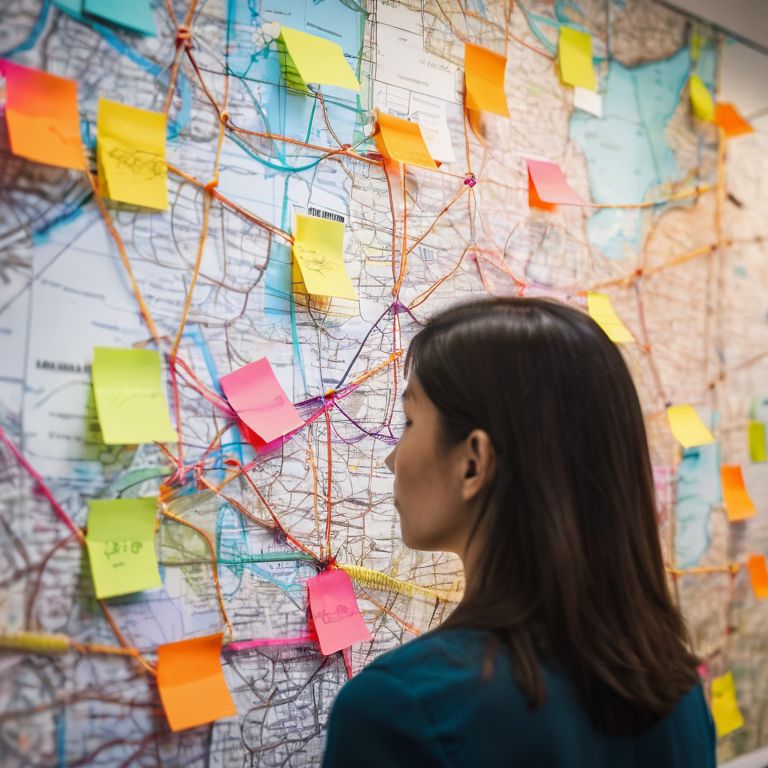I still remember the day I decided to take the no-spend challenge – it was a game-changer for my finances. I had been struggling to pay off my debt, and a friend suggested I try a no-spend month to get back on track. At first, I thought it sounded crazy – how could I possibly avoid spending any money for a whole month? But desperate to turn my financial situation around, I decided to give it a shot. That’s when I learned how to do a no-spend challenge and started my journey to financial freedom.
In this article, I’ll share my personal story and provide you with a step-by-step guide on how to do a no-spend challenge. You’ll learn how to prepare for the challenge, identify areas where you can cut back on unnecessary spending, and stay motivated throughout the process. My goal is to give you the tools and confidence you need to take control of your finances and achieve your goals. I’ll be sharing my own experiences, including the mistakes I made and the lessons I learned, to help you navigate the challenge and come out stronger on the other side.
Table of Contents
Guide Overview: What You'll Need

Total Time: 1 month
Estimated Cost: $0
Difficulty Level: Intermediate
Tools Required
- Budgeting App (for tracking expenses)
- Calendar (for planning)
- Pen and Paper (for note-taking)
Supplies & Materials
- Envelope System (for cash management)
- Savings Account (for emergency fund)
- Meal Planning Book (for reducing food waste)
Step-by-Step Instructions
- 1. First, set a clear goal for your no-spend challenge – what do you want to achieve? Is it to save a certain amount of money, pay off debt, or simply become more mindful of your spending habits? For me, it was about breaking free from the cycle of debt and building a safety net. Write down your goal and put it somewhere visible to remind yourself every day.
- 2. Next, track your expenses for a week or two to understand where your money is going. This will help you identify areas where you can cut back and make adjustments. I used a simple spreadsheet to log every single transaction, no matter how small. It was eye-opening to see how much I was spending on dining out and subscription services.
- 3. Now, create a budget that accounts for all your necessary expenses, such as rent, utilities, and groceries. Be sure to also include a category for savings and debt repayment. I used the 50/30/20 rule as a guideline, where 50% of my income went towards necessary expenses, 30% towards discretionary spending, and 20% towards saving and debt repayment.
- 4. Identify areas where you can cut back on unnecessary expenses and allocate that money towards your goal. For me, it was canceling gym memberships and streaming services I barely used. I also started cooking at home instead of ordering takeout, which saved me a significant amount of money.
- 5. Automate your savings by setting up automatic transfers from your checking account to your savings or investment accounts. This way, you’ll ensure that you’re saving a fixed amount regularly, without having to think about it. I set up a transfer of $500 every month, which may not seem like a lot, but it added up over time and helped me build a safety net.
- 6. Plan ahead for emergency expenses by building an emergency fund. This will help you avoid going into debt when unexpected expenses arise. I aimed to save 3-6 months’ worth of living expenses in a easily accessible savings account. It gave me peace of mind knowing that I had a cushion in case something unexpected came up.
- 7. Review and adjust your budget and spending habits regularly. I scheduled a weekly money date with myself to review my expenses, track my progress, and make adjustments as needed. This helped me stay on track and make sure I was still working towards my goal. It’s also a good idea to celebrate your milestones along the way to stay motivated and encouraged.
Take the No Spend Challenge

As I reflect on my own journey to financial freedom, I can attest that adopting frugal living tips has been a game-changer. One of the most significant challenges people face when embarking on a no-spend challenge is finding ways to occupy their time without spending money. I’ve found that free entertainment ideas can be just as enjoyable as expensive outings. For instance, going for a hike, having a picnic in the park, or hosting a game night with friends can be great alternatives to costly activities.
When it comes to budgeting for beginners, it’s essential to start with small, manageable steps. Begin by tracking your expenses to understand where your money is going. You’ll be surprised at how much you can save by avoiding impulse purchases. I’ve implemented a 30-day rule, where I wait 30 days before buying something that’s not essential. This simple trick has helped me save a significant amount of money and develop a more mindful approach to spending.
By embracing a minimalist lifestyle, you’ll not only save money but also reduce stress and clutter. Start by simplifying your grocery list and exploring saving money on groceries strategies, such as meal planning and using coupons. Remember, the key to success is to be consistent and patient. Celebrate your small wins, and don’t be too hard on yourself if you slip up – simply get back on track and keep moving forward.
Avoiding Impulse Buys With Ease
To avoid impulse buys, I implemented a 30-day waiting period for non-essential purchases. This simple rule has been a game-changer for me. When I see something I want to buy, I wait 30 days before making the purchase. Most of the time, the urge to buy has passed, and I’ve saved myself some money. I’ve also started using cash for discretionary spending, which helps me stick to my budget and avoid overspending. By being more mindful of my spending habits, I’ve been able to make significant progress in my financial journey.
Frugal Living Tips for Success
To make the most of the no-spend challenge, I’ve found that incorporating frugal living tips into my daily routine has been a total lifesaver. For me, it’s all about finding creative ways to cut back on unnecessary expenses without feeling deprived. One of my favorite hacks is cooking at home instead of ordering takeout – not only does it save me money, but it’s also a great way to get healthy and experiment with new recipes.
By embracing this mindset, I’ve been able to make significant cuts to my monthly expenses and allocate that money towards my debt repayment goals. Simple swaps like canceling subscription services I don’t use and finding free entertainment options have also made a big impact.
5 Essential Tips to Help You Succeed in a No-Spend Challenge

- Set clear financial goals and track your progress to stay motivated
- Create a budget and prioritize your essential expenses to avoid unnecessary spending
- Identify and avoid your personal spending triggers, such as shopping when stressed or bored
- Find free alternatives for entertainment and leisure activities, like hiking or reading
- Schedule regular ‘money dates’ to review your finances and stay on track with your no-spend challenge
Key Takeaways for a Successful No-Spend Challenge
I’ve learned firsthand that committing to a no-spend challenge can be a powerful catalyst for breaking free from debt and building savings, all while developing healthier relationships with money
By implementing simple yet effective frugal living tips and strategies to avoid impulse buys, individuals can navigate the challenge with ease and make significant progress towards their financial goals
Through my own journey and the stories of others who have taken the no-spend challenge, it’s clear that this practical approach to financial discipline can lead to profound and lasting changes in one’s financial trajectory
Embracing the Challenge
A no-spend challenge isn’t about depriving yourself, it’s about redirecting your money towards what truly matters – your freedom, your goals, and your peace of mind.
Alex Barnes
Conclusion: You've Got This!
As we’ve walked through the steps of the no-spend challenge together, I hope you’ve seen that it’s not just about cutting back on unnecessary expenses, but about building a mindset of intentional spending. We’ve covered how to prepare for the challenge, avoid impulse buys, and make the most of your frugal living journey. Remember, the goal is to create a sustainable financial habit that will serve you long after the challenge is over. By following these steps and staying committed, you’ll be amazed at how much you can save and how much closer you’ll get to your financial goals.
So, as you embark on this no-spend journey, I want to leave you with a final thought: you are capable of taking control of your finances and achieving financial freedom. It won’t always be easy, but it will be worth it. Stay focused, stay disciplined, and most importantly, be kind to yourself when you slip up. With time and practice, you’ll find that living below your means is not just a temporary solution, but a lifestyle that brings you peace, freedom, and a sense of financial confidence that will stay with you for the rest of your life.
Frequently Asked Questions
What are some common exceptions to the no-spend rule, such as essential expenses or emergency funds?
When it comes to exceptions, I always allow for essential expenses like rent, utilities, and groceries. Emergency funds are also a must – I set aside a small amount each month for unexpected car repairs or medical bills. These exceptions help me stay on track and avoid going into debt when life throws a curveball.
How can I stay motivated and avoid feeling deprived during a no-spend challenge?
For me, it’s all about reframing my mindset – instead of feeling deprived, I focus on what I’m gaining: financial freedom and a clearer sense of priorities. I also celebrate small wins along the way, like cooking a new meal or finding a free hobby, to keep myself motivated and engaged.
Are there any tools or apps that can help track expenses and stay accountable during the challenge?
I swear by my custom spreadsheet, but I also use apps like Mint and Personal Capital to track my expenses. They’re super helpful for staying on top of my spending and identifying areas where I can cut back. Plus, they’re free and easy to use, making it a no-brainer to stay accountable during the challenge!














